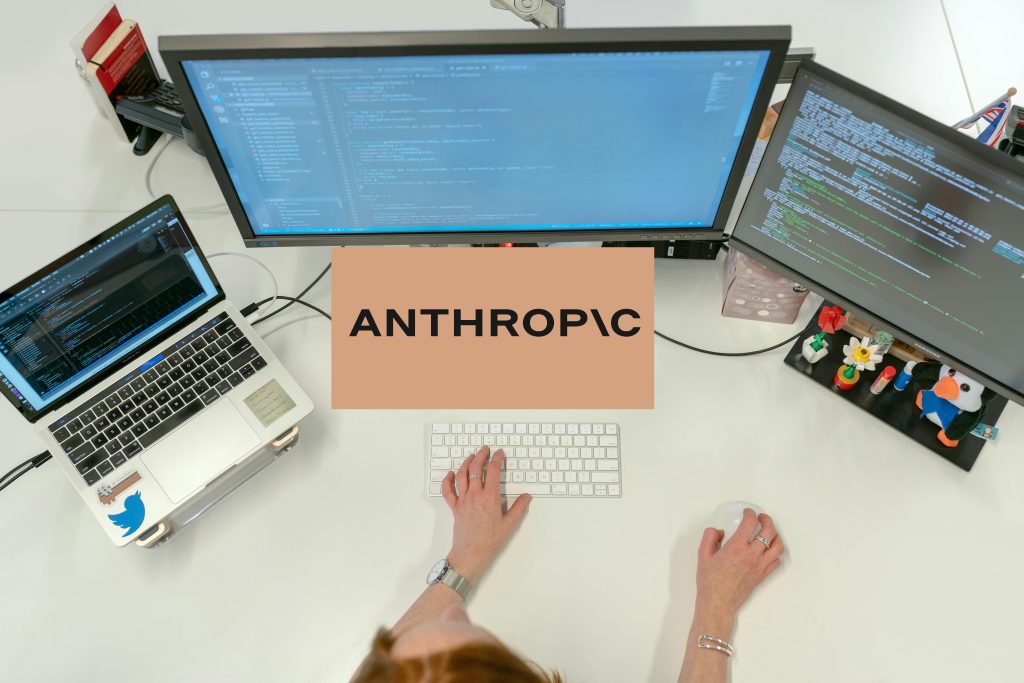Anthropic, a startup backed by Alphabet and Amazon.com, has unveiled an innovative AI feature designed to automate computer tasks, particularly for software developers. The new capability, named “Computer Use,” allows the AI to take control of the user’s mouse cursor, enabling it to perform a variety of tasks with minimal human intervention.
In a recent interview, Jared Kaplan, Anthropic’s Chief Science Officer, explained the functionality: “You can tell AI ‘where to move the mouse, where to click, what to type, in order to do quite complicated tasks.’” This represents a significant shift towards AI agents capable of executing multi-step actions, moving beyond traditional chatbots that mainly generate text or code.

Demonstration of Capabilities
Anthropic showcased the Computer Use feature through practical examples, including coding a basic website and planning a sunrise outing using various applications like Google Search and Apple Maps. These demonstrations highlight the feature’s potential to streamline not only coding tasks but also everyday computer operations.
Currently, Anthropic offers three versions of its Claude AI models tailored for developers, with varying price points based on performance. The recent updates focus on the mid-tier Sonnet model and the more affordable Haiku model. Kaplan noted that the new Claude 3.5 Haiku version can generate code “almost comparable” to the Sonnet model released earlier this year. CEO Dario Amodei has indicated plans to update the most advanced model, Opus, by year’s end.
Safeguards and Limitations
The Computer Use feature is exclusively available in the Claude 3.5 Sonnet model and comes with built-in safeguards to prevent misuse, including spam, fraud, and election-related abuses. Kaplan acknowledged, however, that the AI still makes mistakes, emphasizing the need for ongoing refinement.
Mike Krieger, co-founder of Instagram and Anthropic’s new chief product officer, stressed the importance of feedback from business customers to enhance the feature. “I was booking flights. I really just want this to be completely automated,” he remarked, expressing a personal desire for full automation.

How It Works
The Computer Use tool functions by analyzing screenshots to determine necessary cursor movements. When assigned a task, Claude takes rapid successive screengrabs and calculates the pixel distances needed to click the appropriate areas. “Training Claude to count pixels accurately was critical,” Kaplan explained.
Despite its innovative approach, the feature has limitations, such as relying on static images rather than a live video feed, which can lead to missed notifications. Additionally, it struggles with actions like drag-and-drop, indicating that further development is needed.
Krieger pointed out the tool’s occasional “cumbersome and error-prone” behavior, sharing an anecdote where the AI abandoned a coding task to “peruse photos of Yellowstone National Park.”
Early Adoption and Market Landscape
Now in public beta, the Computer Use feature has already been tested by select partner organizations, including Amazon, Canva, Asana, and Notion. As competition intensifies, companies like OpenAI are also developing similar technologies, although they have not yet made them publicly available. This has led to an “arms race” within the AI sector, with expectations that these tools will drive significant revenue growth.
The introduction of such AI tools raises important discussions about their impact on the workforce. Some believe these innovations will enhance productivity, while others express concern over potential job displacement across various sectors.
Addressing Concerns
Anthropic is proactively addressing concerns related to the technology’s deployment. The company has implemented measures to detect and mitigate potential abuses, especially in light of the upcoming U.S. elections. “While computer use is not sufficiently advanced or capable of operating at a scale that would present heightened risks relative to existing capabilities, we’ve put in place measures to monitor when Claude is asked to engage in election-related activity,” Kaplan noted.
These safeguards aim to prevent Claude from generating content for social media or interacting with government websites. However, Kaplan acknowledged that these measures might not be foolproof, as creative circumventions could emerge.

Anthropic’s launch of the Computer Use feature signifies a major advancement in AI technology, transitioning from traditional chatbot functionalities to autonomous task execution. As the tool undergoes public testing, the company is keen to gather feedback to refine its capabilities while addressing valid concerns regarding its implications for the workforce. The future of this technology promises to reshape productivity standards and redefine how developers interact with their computers.
Copyright©dhaka.ai
tags: Artificial Intelligence, Ai, Dhaka Ai, Ai In Bangladesh, Ai In Dhaka, Future of AI, Artificial Intelligence in Bangladesh, Anthropic



